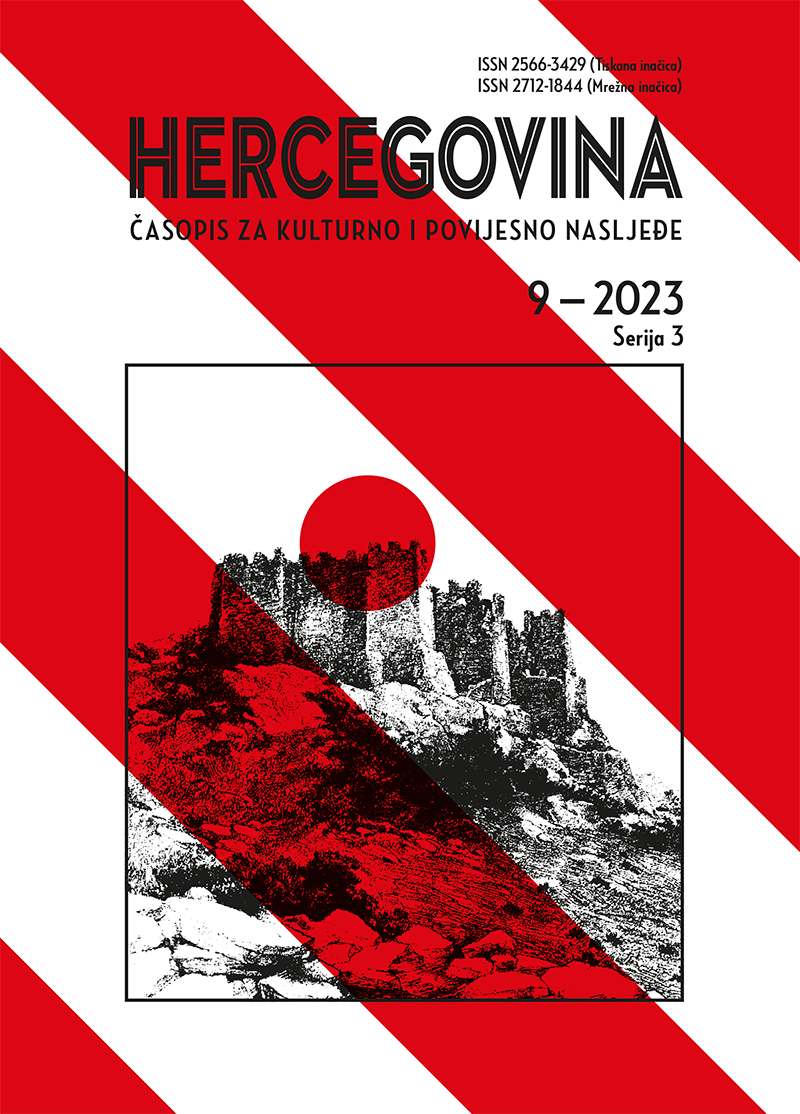Nove arheološke spoznaje s prostora Drinovaca
New Archaeological Findings from the Region of Drinovci
Author(s): Tino Tomas, Dario VujevićSubject(s): Archaeology
Published by: Filozofski fakultet Sveučilišta u Mostaru - Studij povijesti i Hrvatski institut za povijest - Zagreb
Keywords: archaeology of Bosnia and Herzegovina; Peć Mlini; Drinovci; new age; cave; prehistoric stone tumulus; Bronze Age;
Summary/Abstract: The paper publishes the archaeological research on two sites from the Drinovci region (Municipality of Grude). One site is a type of cave – the Cave on Zaskok, and the other an ancient stone tumulus; thus two different types of archaeological sites, with different functions and from different time periods and cultural contexts. Therefore, different strategies and approaches to the sites themselves had to be used during the excavation, along with different methods of excavation, and different methods for collecting data and archaeological materials. The research on the Cave on Zaskok revealed that it had been used during the New Age. Within the cave itself, there are documented traces of an object which had burnt down and was never restored. The object had been built with walls running lengthwise, partitioning the interior of the cave, which served economic purposes (storehouse, workroom). Furthermore, at the foot of the cave/object is a water mill, which can be placed in the closest temporal and functional context of a documented New-Age layer in the cave, particularly as a path runs directly along the entrance to the cave, as the only communication route to descend to the watermill. Whilst excavating the Cave at Zaskok, the older layers were not documented, and the geological foundation was a layer of transported sediment that was the result of water flow, which would suggest that water had flowed through the cave at an earlier date and that this was the reason it had not been attractive to communities in earlier historical and ancient periods. The second part of the investigation was directed towards a prehistoric stone tumulus placed at the foot of Petnjik hill. It is a burial monument typical for cultural regions during the Bronze Age. The excavation documented three graves (with grave-2 having two interred bodies); unfortunately, all three graves had been found devastated. The funereal architecture was in the form of stone chests consisting of four vertically placed stone slabs. Only grave-2 had grave goods in the form of ceramic bowls and a flint fire striker. Thanks to the chronologically sensitive elements that we found in the gathered fragments (including the Litzen decoration), we can date grave-2 from the second half of the early Bronze Age. Whilst analysing the interior space (stratigraphic) relations, it is evident that grave-1 is the oldest, and that it was the primary burial for which the tumulus was raised.
Journal: Hercegovina. Časopis za kulturno i povijesno naslijeđe (od 2018)
- Issue Year: 2023
- Issue No: 9
- Page Range: 7-42
- Page Count: 36
- Language: Croatian

